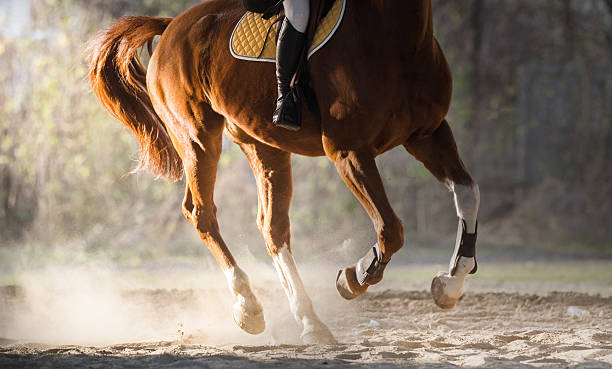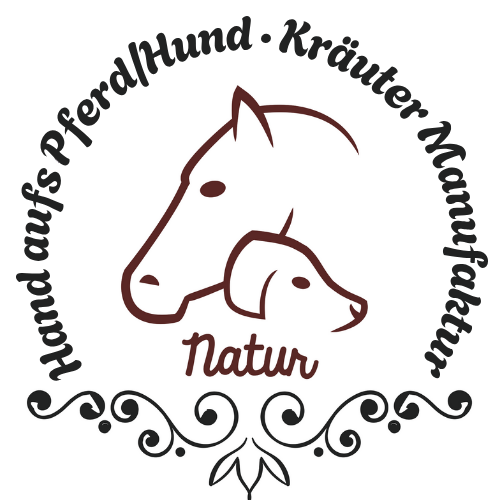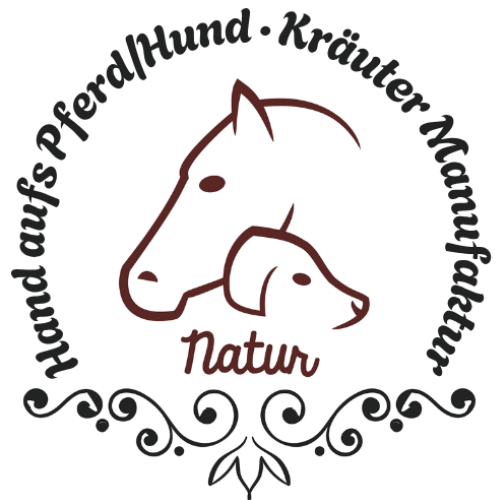
Suspensory ligament damage in horses – causes, diagnosis
Suspensory ligament damage in horses – causes, diagnosis and treatment options
Suspensory ligament injuries are among the less common, yet still significant, injuries in horses that can occur in both sport and leisure riding. The suspensory ligament is one of the most important structures in the horse's leg, stabilizing the horse and supporting its movement. Damage to this ligament can not only lead to lameness but also have long-term effects on the horse's performance and well-being.
In this blog post, we would like to provide you with a detailed overview of suspensory ligament injury in horses —from the causes and symptoms to diagnosis and treatment options. It becomes clear that this is a complex injury that requires careful veterinary care.
What is the suspensory ligament in horses ?
The suspensory ligament (also called the suspensory ligament or pastern ligament ) is a strong ligament located on the back of the horse's lower limbs. Its function is to support the pastern (the horse's "ankle joint") and stabilize the tendons of the hind legs, especially the deep flexor tendons. The suspensory ligament prevents the horse from excessively bending downward into the pastern or joint when walking.
It is made of strong connective tissue that can withstand high levels of stress, but like any other tissue in the body, it is susceptible to damage from overuse, traumatic injuries, or inflammatory processes.
Causes of suspensory ligament damage
Suspensory ligament injuries usually do not result from a single, sudden impact, but rather from chronic strain or overload. The most common causes include:
-
Overload and repetitive strain : Especially in sport horses that are regularly trained intensively (e.g., in jumping, galloping, or dressage), the suspensory ligament can become overloaded over time. Uneven loading or incorrect training methods can cause micro-tears, leading to weakening of the tissue.
-
Sudden or unusual stress : A sudden, intense burst of stress (e.g. after a long break or during an unprepared exertion) can lead to acute suspensory ligament damage because the tissue cannot adequately compensate for the sudden stress.
-
Incorrect foot position and hoof problems : Incorrect hoof position, poor hoof care or improperly fitted horseshoes can lead to uneven loading of the suspensory ligament and cause long-term damage.
-
Age : With increasing age, connective tissues lose elasticity and resilience, which increases the risk of damage to the suspensory ligament.
-
Inappropriate training conditions or ground conditions : Hard or slippery terrain and uneven ground conditions can lead to excessive strain on the lower limbs and place additional strain on the ligaments.
Symptoms of suspensory ligament damage
The symptoms of suspensory ligament damage can vary depending on the severity of the injury, but they are often easily recognizable. Typical signs include:
-
Lameness : In most cases, lameness is observed in one or both hind legs, varying in severity depending on the injury. The lameness may be particularly noticeable when galloping or jumping.
-
Swelling and local warmth : Swelling or hardening may occur in the area of the suspensory ligament on the affected leg. The affected area is often warmer than the surrounding tissue.
-
Sensitivity and pain : The horse is sensitive to touch in the suspensory ligament area and shows signs of pain, especially when pressure is applied.
-
Changes in gait : In minor injuries, the horse may attempt to minimize stress on the affected leg, which may result in a change in gait. In more severe cases, lameness becomes clearly visible.
Diagnosis of suspensory ligament damage
Diagnosing suspensory ligament damage usually involves several steps, and a thorough examination by a veterinarian is essential. Common diagnostic procedures include:
-
Clinical examination : The veterinarian performs a thorough examination, palpating the leg, checking for swelling and temperature effects, and assessing the horse's gait. First, the suspensory ligament is checked for direct tenderness.
-
X-rays : X-rays help rule out possible bone changes or joint problems. However, in cases of pure suspensory ligament damage, X-rays are not always sufficient, as they cannot clearly visualize the soft tissue of the suspensory ligament.
-
Ultrasound examination : Ultrasound examination is the procedure of choice for accurately assessing the structure of the suspensory ligament. It can visualize both inflammation and small tears in the tissue.
-
Scintigraphy : In some cases, scintigraphy (magnetic resonance imaging) can also be used to visualize areas of inflammation in the soft tissue.
-
Blood tests : A blood test can help rule out systemic inflammation or infection.
Treatment of suspensory ligament damage
Treatment of suspensory ligament damage depends on the severity of the injury and should always be performed under veterinary supervision. Common treatment methods include:
-
Rest and rest : The first and most important step in treating a suspensory ligament injury is complete rest. The affected horse should be allowed to recover from physical activity to support the healing process. This can take several weeks to months, depending on the severity of the injury.
-
Anti-inflammatory drugs : Nonsteroidal anti-inflammatory drugs (NSAIDs) are often used to reduce inflammation and relieve pain. In severe cases, cortisone may also be used, but this is usually not the first choice.
-
Cold and heat treatment : In the initial phase, cold can help reduce inflammation and swelling. Later, heat treatments can be used to promote healing and circulation.
-
Physiotherapy and muscle building : Once the acute symptoms have subsided, targeted physiotherapy can help stabilize the tissue and strengthen the muscles surrounding the affected suspensory ligament. This reduces stress on the suspensory ligament and promotes faster healing.
-
Surgical intervention : In particularly severe cases, such as complete tears in the suspensory ligament, surgical treatment may be necessary. However, this is rare and is only performed in extreme cases.
-
Suspensory bandage and support : In some cases, a special bandage is applied to support the stability of the suspensory ligament and prevent additional strain.
Follow-up treatment
Rehabilitation after a suspensory ligament injury is often lengthy and requires patience. It's important to gradually reintroduce the horse to exercise and closely monitor its physical condition. A gradual increase in training intensity and regular veterinary checkups are crucial to prevent relapses and minimize the risk of subsequent injuries.
Prevention of suspensory ligament damage
Although not all suspensory ligament injuries are preventable, there are some preventative measures that can reduce the risk:
-
Gentle training : Excessive strain should be avoided and training should be increased slowly in order not to overload the suspensory ligament.
-
Balanced hoof care : Regular hoof care, including appropriate shoeing, is important to prevent misalignments and incorrect loading.
-
Adapt the ground conditions : Pay attention to the surface on which the horse is training to avoid sudden and uneven loads.
-
Targeted muscle development : A well-trained and strong horse with stable muscles is less susceptible to tendon and ligament injuries.
Conclusion
Suspensory ligament damage is a serious injury that can not only impair a horse's performance but also have long-term consequences for its health. Prompt diagnosis and targeted treatment are crucial for recovery. However, with proper care and rehabilitation, many horses can fully recover from suspensory ligament damage and return to sport.
Source; Martina Hemm July 2025
Note: This article is for general information only and does not replace the advice and treatment of a veterinarian. In the case of suspensory ligament injury, a specialist should always be consulted.
Hand aufs Pferd/Hund Kräuter Manufaktur
Tendon herbs for horses - walking pleasure
Split



